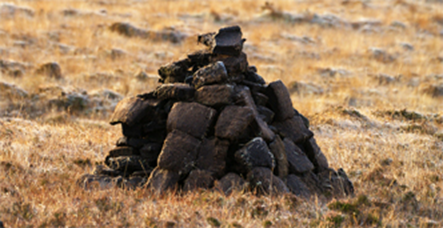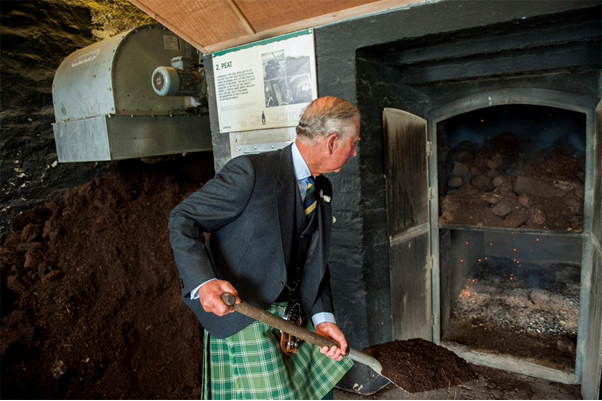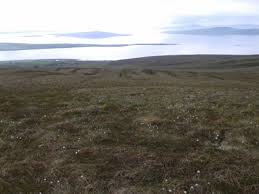Gregor’s Guide To Peat

Peat stacking
When I first started drinking whisky, peaty whisky was not enjoyable and as recently as two years ago I still didn’t like peat. This changed when I went to Feis Islay in 2018 and I tried so many different peaty whiskies that it finally clicked, like when you start drinking beer and it’s not great and then one day it’s good and it works. Funnily enough, the main reason I’ve found that people turn off from whisky is that when they were young they either had a bad experience with a heavily peated dram or a substandard blend.
The sort of flavours you would expect from peat are medicinal and smokiness. To obtain peat flavour, the malted barley is dried using heat from peat during the killing stage of production.

The temperature and length of time the barley is kilned with peat will determine much of the intensity of the flavour; high temperatures reduce smokiness while wetter barley absorbs more of the flavours.
Peaty whisky is an acquired taste for sure but although Islay is famous for peat many other mainland distilleries create peaty releases from Glenturret, Macallan (although they are sold under different brand names) and Ben Nevis amongst others.
In fact, most distilleries that I approach for new spirit will provide quotes for peated new spirit too so we’re going to see much more of it coming from other locations in addition to Islay.
There are 6 main sites for peat in Scotland and it has been identified that each site has a different flavour characteristic. The reason for this is that peat is a decomposition of vegetable matter so if you imagine that each of these 6 peat sites had a different makeup of trees and vegetation then it makes sense that when this vegetation decomposed that the different plants, flowers and trees would have different flavour characteristics.

peat bog
- Hobbister Hill, Orkney Blanket bog
- St Fergus, Aberdeenshire raised bog
- Tomintoul, Banffshire raised bog
- Garlbreck Moss, Islay basin bog
- Glenmachrie moss, Islay Basin bog
- Castlehill, Islay blanket bog
Peat PPM is generally acknowledged as the following:
Lighted peated malt is 1 – 5 PPM (quite a few single malts would fit into here from Speyside and Islay as it is only a light touch)
Medium peated malt is 5-15 PPM (Ardmore Single Malt would fit into this category)
Heavily peated malt is 15-50 PPM (Our Lochindaal would fit into this category along with likes of Port Charlotte)
If you would like to learn more about peat and the different flavours from the different bogs then check out this blog about Peat Terroir.